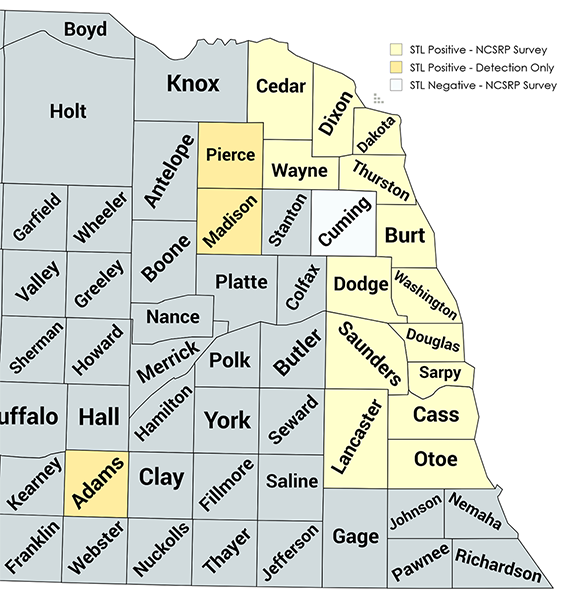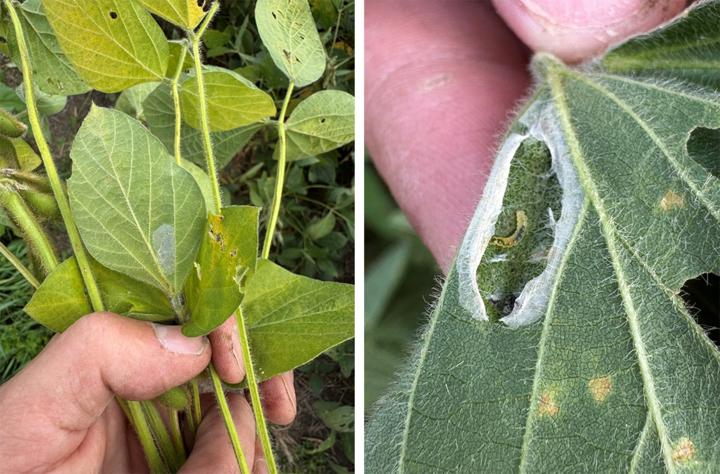Key Takeaways
- Soybean tentiform leafminer has been found in 17 Nebraska counties, but infestations are low.
- Feeding causes white blotches on the underside of leaves, mostly in the mid- to lower canopy.
- Current infestations show little to no yield impact — no treatment is needed.
- Scout along field edges and report new finds to Justin McMechan.
What We’re Seeing
A native insect called soybean tentiform leafminer has been confirmed in 17 Nebraska counties during our 2025 survey (Figure1). Most fields had very low levels, with just a few mined leaves per plant. One hot spot in Dixon County showed heavy edge infestations, but that was the exception.
Should We Be Concerned?
Leafminer feeding makes white, irregular blotches (“mines”) on the underside of leaves, usually mid- to lower canopy (Figure 1). Research and past experience show these leafminers rarely reduce yield and are similar or less damaging than other defoliators (e.g., Japanese beetle). No insecticide treatments are recommended at this time.
Where It Came From
This species is native to North America and commonly found on wild legumes, like American hogpeanut and slickseed fuzzybean. It was first documented on soybean in Minnesota in 2021. Subsequent state detections were South Dakota in 2022, North Dakota in 2023 and a single Nebraska field (Madison County) in 2024. Our Nebraska survey began in 2025 with support from NCSRP.

How to Scout
- Focus on field edges, especially next to dense vegetation such as tree lines.
- Lift a plant and look at the underside of leaves while slowly rotating the plant.
- Look for white, blotchy mines — irregular shapes limited to the underside of the leaf surface.
- Most mines, if present, are typically at or below the mid-canopy.
What to Do If You Find It
- No insecticide applications are needed based on current levels, time of season, and expected impact.
- If you suspect leafminer, email a photo and the county in which it was found to Nebraska Extension Entomologist Justin McMechan so we can keep the Nebraska map up to date.
Bottom Line
We’re monitoring it in the state, but don’t change your management. Keep scouting edges and let us know if you see unusual levels.

References
- Robert L Koch, Joseph Moisan-De Serres, Arthur V Ribeiro, First Reports of Macrosaccus morrisella (Lepidoptera: Gracillariidae) Feeding on Soybean, Glycine max (Fabales: Fabaceae), Journal of Integrated Pest Management, Volume 12, Issue 1, 2021, 44, https://doi.org/10.1093/jipm/pmab038/.
- Buntin, G. D. 1994. Soybean leafminer, pp. 79–80. In L. G.Higleyand D. J. Boethel (eds.), The handbook of soybean insect pests. The Entomological Society of America, Lanham, MD.
- Buntin, G. D., and L. P. Pedigo. 1982. Foliage consumption and damage potential of Odontota horni and Baliosus nervosus (Coleoptera: Chrysomelidae) on soybean. J. Econ. Entomol. 75: 1034–1037.

